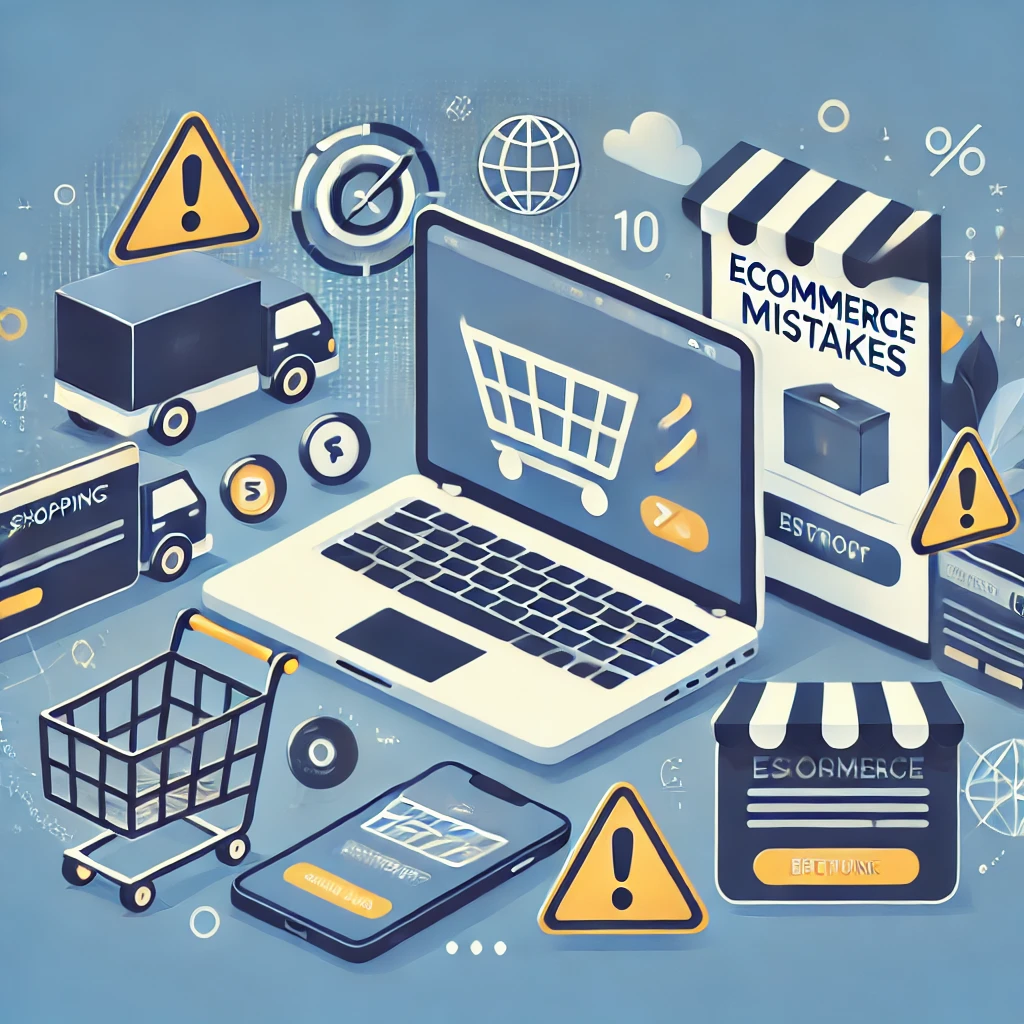In the last few years, there has been unprecedented growth in the e-commerce industry as more people prefer to shop online due to its convenience and variety. To make the most of this growth, understanding how to sell products online effectively is important.
With online business, entrepreneurs and small enterprises can expand their markets globally, wherever they operate. On the other hand, being remarkable in such an overcrowded industry is not easy at all.
The following are essential steps to help you successfully sell products online, from choosing a good platform to scaling up your business.
How to Sell Products Online: A Step-by-Step Guide
Step 1: Choosing the Right Platform for How to Sell Products Online
The first and most important decision you must make is about the platform that best suits your online shop. Your store’s features, design possibilities, and overall user experience depend upon the one you choose to sell products online.
- Shopify: Beginner-friendly—one of the most popular e-commerce platforms. Shopify has an easy-to-use interface with a variety of customizable themes, which allows you to create a professional-looking online store to sell products online.
It also takes care of integrated payments, inventory management, and basic marketing tools. If you’re looking to boost your sales on Shopify, this guide can help you achieve success.
- WooCommerce: An amazing mountain of opportunities if already you’re using the WordPress framework for building your website. It is a powerful extension that helps turn any ordinary WordPress into a full-fledged selling machine.
You can tweak it anyway, as WooCommerce presents endless options of themes and plugins to strengthen its operational abilities.
- Amazon & eBay: When someone wants to sell their goods and reach a big audience, they may decide to use either Amazon or eBay marketplaces, where they will get more customers at inexpensive rates on all their products, but they also have a lot of competition plus various charges that may seem unending.
- Etsy: For people dealing with hand-made or vintage items, they need to visit this site, as it caters to creative people, providing them an avenue where their products can shine.
Tips for Choosing the Right Platform to Sell Products Online:
- When selecting a platform, consider both the type of your products and who you are aiming at in terms of audience.
- Assess the fees, usability, and additional elements it has on the said platform.
- Also, think about where you want to be in some years’ time—go for a platform that can develop alongside your business.
Step 2: Setting Up Your Online Store to Sell Products Online
After selecting a platform, the next move is to prepare your online shop. This requires more than merely compiling a directory of your wares; it takes the creation of a functional site that is user-friendly and looks good at the same time to successfully sell products online.
- Domain Name: A domain name is your online self. So make sure you select something unique that can be remembered easily and is relevant to what you are selling.
- Designing Store: Your online store should have a clean design and professional appearance and be in line with the brand’s image. Most e-commerce platforms provide customizable templates, but that isn’t enough, as the site needs to be mobile-responsive and easy to navigate through.
- Item Listings: Effective sales begin with effective product descriptions; otherwise, they could lead down the rabbit hole due to multiple angles taken in images displaying these products taken by professional photographers representing them properly in terms of their details like highlighting feature benefits, etc.
Besides SEO keywords, related products should be used for better-improved rankings in search engines such as Google. Check out these best practices for product photography to make your items stand out.
For those specifically interested in selling on Etsy, setting up your store correctly is key. Here’s a detailed guide on how to sell on Etsy that covers everything you need to know.

Tips for Setting Up Your Store to Sell Products Online:
- Make sure that your site is easy for visitors to navigate during shopping; when the website is not easy or takes too long to load, it makes people leave fast or never come back.
- Have professional-looking pictures, and you can also provide videos showcasing how they work instead of just having plain text descriptions.
- Employ obvious calls for action (CTAs) that will assist clients with their decisions on buying from you.
Step 3: Marketing Your Products Online to Sell More Products Online
- Search engine optimization (SEO): Online stores need to increase the level of traffic coming from natural sources. For this reason, it is advisable to optimize your website as well as product pages using related key terms that potential clients would use in searching.
This entails using keywords within your product names, explanations, and meta tags, among others. Learn more about effective eCommerce SEO techniques for 2024 that can help improve your search engine rankings and help you sell products online.
- Social media marketing: Instagram, Facebook, and Pinterest are useful tools that can greatly help you promote your items. In addition, develop interesting messages that capture the attention of your intended audience; performing advertisements online so that more people get to know about what you sell improves the advertising on social media.
You could also turn to influencers onsite for credibility purposes. Check out social media strategy tips to effectively promote your products and sell products online.
- Email marketing: Keeping an email list allows you to remain in contact with clients while still being able to build connections. Regular newsletters featuring new products, promotional activities, or discounts on selected offers could do wonders for such a company’s relations aside from driving repeat business through targeted campaigns.
Here are some tips on how to build an effective email marketing campaign.
Tips for Marketing Your Products Online:
- Exploit user-generated content and product ratings to instill faithfulness and credibility.
- Test various advertisement approaches more often than anything else to determine the ones that have more impact on people.
- Evaluate your advertisement attempts and modify your strategies as indicated by performance statistics.
Step 4: Managing Orders and Customer Service to Improve Your Ability to Sell Products Online
For your online company to succeed, effective order administration and unparalleled customer care are essential. Customers want an easy shopping experience that starts when they place an order until it arrives at their homes.
- Processing Orders: You should try to make the order processing system as automated as possible so that there would be fewer errors as a result of people’s handwork, and productivity greatly improves this way.
Most of the e-commerce platforms have packs for managing orders that let one follow up on orders, take care of stock taking, and take care of payments.
- Shipping: It is important to offer different options for shipping to meet the various needs customers might have. Nothing is better than giving customers free shipping or some kind of discount on their delivery when they buy more goods at once. Be open about when it will take for their items to be delivered, in addition to possible delays that may occur.
- Customer Service: Excellent customer service can set you apart from your competitors since it is one factor that differentiates them all. Thus, writing clear directions from order acknowledgment through timely delivery notifications is necessary for your business too; this way, you will be able to describe every stage effectively.
Additionally, providing customers with updated contact information whenever they want to ask something should be made available at all times so that their queries are timely answered as well.
Customers also feel good when they know that they can easily return or change what they have bought at any time without facing difficulties at some point later on.
Tips for Managing Orders and Customer Service:
- Use live chat technology to offer fast help to consumers.
- Frequently review your FAQ section to answer typical client inquiries.
- Pay attention to customer opinions and always do more to enhance your items and services.
Step 5: Scaling Your Online Business to Sell More Products Online
Once you have launched your online store, the next step is to scale your growth. This involves adding new products to your portfolio, breaking into new markets, and optimizing your business operations to continue selling products online successfully.
- Expanding Product Lines: When entering the market and beginning to set up an online store, it would be wise for the man or a woman to think about the other types or other types of existing products when he or she expands his or her eCommerce platforms.
Such a move will also aid in ensuring that every merchandise is restocked as often as possible, and consumers will have many choices in making appropriate decisions on what to purchase.
- International Markets: If you are fine with the percentage of sales in your local market, then try to expand the range by delivering the product to other countries/regions.
Spend time studying areas such as logistics, the cost of taxes, and the legal requirements for selling to users in different regions so you can sell products online globally.
- Performance Analytics: Some of the tracking systems include Google Analytics to track website traffic, sales patterns, and customer interaction. Analyzing this data can help you pinpoint trends in consumer behavior and preferences and, most importantly, make necessary adjustments to your specific marketing strategies.
For more information, check out this ultimate guide to scaling your eCommerce business.
Tips for Scaling Your Online Business:
- Increase traffic by investing in paid advertising.
- Make sure you test as well as optimize the performance of your website regularly.
- As your business picks up speed, it may be a good idea to outsource things like order fulfillment or customer service responsibilities for better efficiency.
Conclusion
Online business involves selling products online, and it is a profitable business, though challenging and needs time and commitment to execute. They have resolved to use the right platform in creating their online store, carry out a proper marketing strategy, and ensure that their customers are fully satisfied with their operations so that they can develop a good e-commerce business.
Just keep in mind that the greatest significance lies in the constant adaptation to trends and the ongoing improvement of the processes and experiences that are close and dear to every customer. For a comprehensive overview, here’s a step-by-step guide on how to start an eCommerce business in 2024.
Begin the journey today to see your online business bloom!







